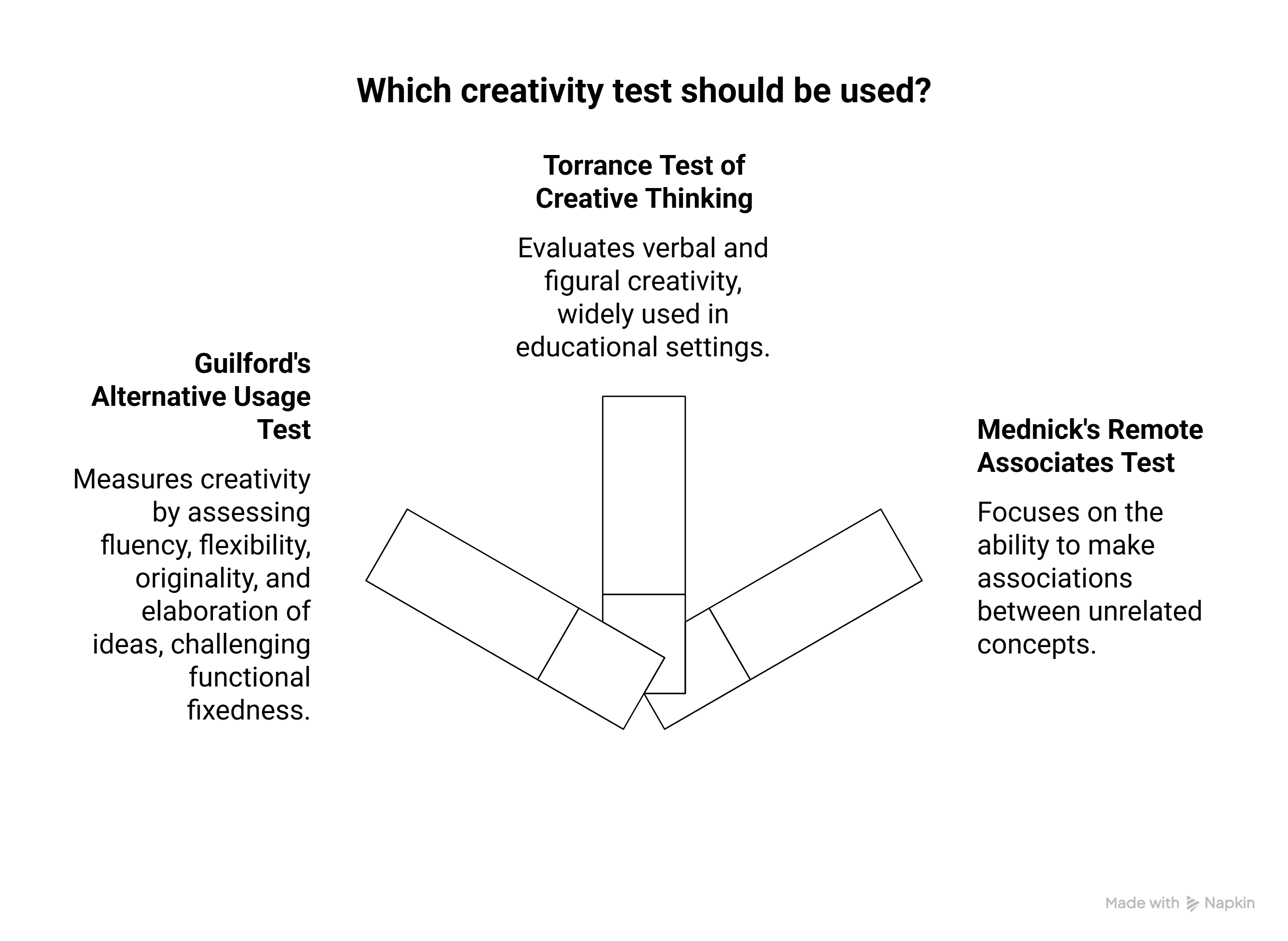Can Creativity be measured?
Tests for Measuring Creativity
Yes, creativity can be measured, and several psychological tests have been developed to do so since the 1960s. These tests focus on divergent thinking—the ability to generate multiple solutions to a problem, as opposed to convergent thinking, which seeks a single correct answer. While intelligence is often seen as the ticket to a show, creativity is the main event.
Tests for Measuring Creativity
1. Guilford's Alternative Usage Test
Developed by J.P. Guilford, a pioneer in creativity research, this test challenges a person's functional fixedness—the cognitive bias that limits a person to using an object only for its intended purpose. A child, for example, is often more creative with an object because they are not fixated on its function, allowing them to see a comb as a car or a sword.
The test measures creativity based on four metrics:
- Fluency: The total number of ideas generated.
- Flexibility: The diversity of the ideas across different categories.
- Originality: The uniqueness of the ideas compared to others.
- Elaboration: The level of detail and effort put into explaining each idea.
2. Torrance Test of Creative Thinking (TTCT)
Building on Guilford's work, Ellis Torrance developed this test, which is widely used in schools and colleges today. It measures creativity on both verbal and figural dimensions.
- Verbal Creativity: This involves generating new words or improving existing products, such as suggesting ways to improve a comb.
- Figural Creativity: This involves visual tasks, like drawing different images within a set of circles.
3. Mednick's Remote Associates Test (RAT)
Sarnoff Mednick's work focuses on the idea that creativity is the ability to make associations between seemingly unrelated concepts or words.
- The test presents three words from different domains and asks for a fourth word that connects them. For example, the word that connects "cottage," "Swiss," and "cake" is "cheese".
- This test demonstrates that while intelligent people tend to go deeper into a specific domain, creative people think wider across multiple domains, allowing them to connect disparate ideas.


No Comments